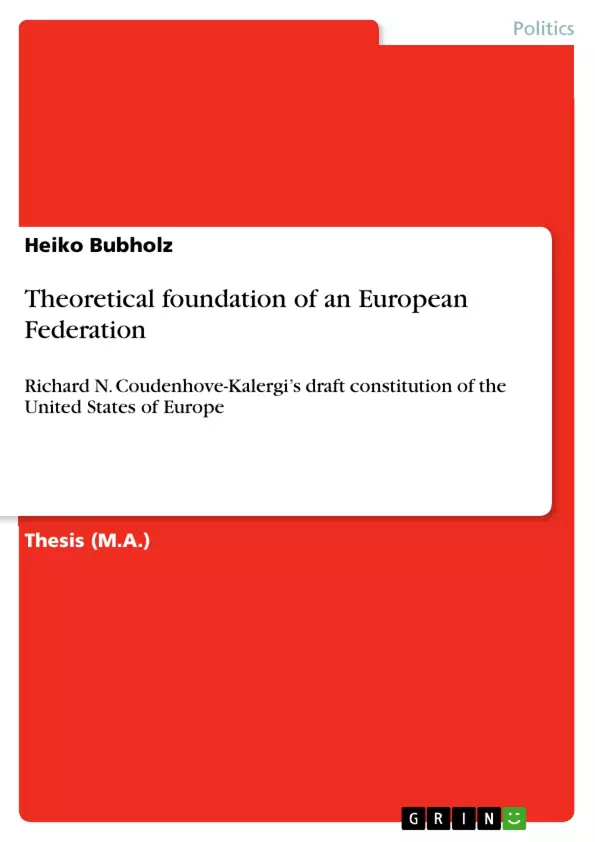Inevitably, the current status of European integration has to be elaborated in a limited scope to identify the actual problems, which the EU is contemporarily confronted with. This leada to the discussion regarding the establishment of a European State and its ideal organization.
The possibility of an European State and its internal structure will be subject of the debate. In an ideal world it would be effortless to realize these considerations. Since we are far from living under such conditions, some thoughts should also be devoted to the practicability and applicability of state theories on an experiment like the EU.
In fact, this book ought to be a comprehensive discussion of nothing less than a European State, its internal structure and particular approaches made towards this end. Or, to refer to Ronald Mackay, one of the early contributors: “Every statement about a New Europe need not be construed as having special reference to the creation of a new government for Europe, of whatever kind. But aspiration must find practical expressions or be fruitless”.
Inhaltsverzeichnis (Table of Contents)
- Introduction.
- From Paneuropa and Mitteleuropa towards the United States of Europe.
- Current Status of European Integration.
- Problems of the Integration Process.
- The Conceptual Foundation
- State Character of Europe.
- Applicable Theories on the State.
- The European State.
- State Structure and the Balance of Powers.
- Optimal State Structure.
- Structure of Power Relations & Checks and Balance.
- Suitable forms of Representation and Legitimacy.
- Legislative and Executive Branch.
- Current Status in EU's Structure.
- Alternatives towards a Federalization.
- The European State reviewed.
- Instead of a Conclusion.
Zielsetzung und Themenschwerpunkte (Objectives and Key Themes)
This work explores the theoretical foundations of a European Federation by drawing upon the ideas of Richard N. Coudenhove-Kalergi and his draft constitution for the United States of Europe. It aims to analyze the historical development of European integration, the challenges faced by the current institutional framework, and the potential for a more integrated European state.
- Historical Development of European Integration
- Challenges of the Current EU Institutional Framework
- Theoretical Frameworks for a European State
- Potential Models for a Federalized Europe
- Comparative Analysis of Different Approaches to European Integration
Zusammenfassung der Kapitel (Chapter Summaries)
- Introduction. This chapter provides a historical overview of the concept of a united Europe, from the ideas of Paneuropa and Mitteleuropa to the current state of European integration. It explores the key challenges and problems that have emerged in the integration process.
- The Conceptual Foundation. This chapter examines the theoretical frameworks for understanding the nature of a European state. It analyzes different theories on the state and their relevance to the European context.
- The European State. This chapter delves into the structure of a potential European state, examining the balance of powers, optimal state structure, and suitable forms of representation and legitimacy. It also discusses the legislative and executive branches, considering both the current EU structure and alternative models for federalization.
- The European State reviewed. This chapter provides a critical review of the arguments and proposals presented in the previous chapters, evaluating the strengths and weaknesses of different models for a European state.
Schlüsselwörter (Keywords)
Key concepts and keywords include European integration, European federation, United States of Europe, Richard N. Coudenhove-Kalergi, state theory, institutional framework, federalization, balance of powers, representation, legitimacy, and comparative analysis.
- Arbeit zitieren
- Heiko Bubholz (Autor:in), 2002, Theoretical foundation of an European Federation, München, GRIN Verlag, https://www.hausarbeiten.de/document/77828


